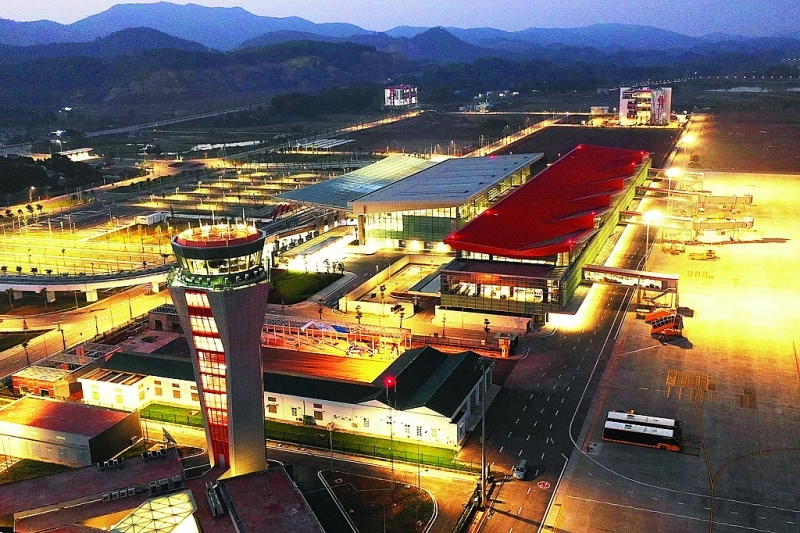Promoting PPP investment for infrastructure development
According to the assessment of the Central Economic Commission, the number of new projects implemented under the mode of public-private partnership as stipulated in the provisions of the Investment Law under is still limited, mainly focusing on the transport sector. This shows that public investment resources have not really promoted their leading role as "priming capital" to attractprivate sector investment in infrastructure development.
The role of "prime capital" has not been promoted
Speaking at the seminar "Promoting public-private partnership (PPP) investment in infrastructure development in some socio-economic fields of Vietnam", held on July 11, Do Ngoc An, Deputy head of the Central Economic Commission said that currently, the average demand for total social investment capital in the five years from 2021 to 2025 is about 32-34% of GDP. However, the average proportion of public investment capital in 5 years comprises only about 16-17% of total social investment capital per year (about 2.9 million billion VND), which cannot fully meet capital requirements for socio-economic investment. Therefore, other social resource mobilization, especially private sector resources, plays a very important role in the socio-economic development of Vietnam.
In many countries around the world, including developed countries like Korea, Canada, and France... and developing countries like Indonesia, Philippines, and Brazil... mobilizing social resources through the method of public-private partnership has been applied for a long time and contributed significantly to the development of social infrastructure of each country.
Over the years, the implementation of investment in the form of public-private partnership (PPP) has achieved certain results, contributing to the improvement of the country's infrastructure system. In addition to traditional investment capital sources including the state budget, government bonds, and ODA, investment capital from the non-state sector through the PPP mechanism has contributed to changing the image of localities and significantly improved the system of transport, urban and energy infrastructure. Thousands of billions of human capital have been mobilized to build national routes, highways, power plants, and many other projects contributing to the country's socio-economic development.
However, the implementation of social infrastructure development projects under the mode of public-private partnership in Vietnam still faces many obstacles, which have not been thoroughly resolved, negatively affecting the PPP investment environment and the implementation of new PPP projects. The number of new projects implemented under the provisions of the PPP Law is still limit ed, most of them are transitional projects, mainly concentrated in the transport sector. This shows that public investment resources have not really promoted their leading role as a 'prime capital' to attract resources from the private sector for infrastructure development," said the Deputy Head of the Department of Planning and Investment. Central Economic Commission emphasized.
 |
|
Van Don International Airport - the first private airport in Vietnam to be invested in the form of PPP. Photo: Internet |
Hesitating due to the lack of a risk-sharing mechanism
Analyzing the reasons why the PPP investment method in social infrastructure projects has not been able to fully promote its advantages, experts said that many projects selected to apply PPP are not feasible; The Law on Investment in the form of public-private partnership has not yet regulated a number of areas such as culture, sports, and tourism; Otherwise, there is no regulation on the mechanism to realize the State's commitment to the guarantees in the PPP contract; while the current investment guarantee mechanism reveals a lot of shortcomings.
Regarding the inadequacies when implementing PPP contracts, Pham Duy Nghia, Fulbright University Vietnam, an ADB consultant, said that the biggest problem in the implementation of PPP projects in Vietnam today is the hesitation of both the State and the private sector due to no-risk sharing mechanism. Foreign investors also rarely invest in infrastructure except for investment in the energy sector due to its transparent policies.
“In order to promote investment capital under the PPP method, the State needs to join hands with enterprises to manage the risks. In addition, the Government needs to issue a leading political decision, assign a risk management specialized agency which is ready to have medium and long-term cash flows to cope with risks”, proposed Mr. Pham Duy Nghia.
According to Ms. Do Thi Bich Hong, Institute of Banking Strategy, State Bank of Vietnam, there must be a clear mechanism for risk sharing between the private sector and the State and an urgent need for shared funds. In the coming time, it is necessary to pay attention to investment in infrastructure construction, which put more weight on the role of the bank capital in supporting lending. However, it is necessary to improve the legal framework related to collateral to better control the relevant risks.
“The mechanism and responsibilities between the parties must be clear. Moreover, lending banks and credit institutions directly related to projects must be taken part in lifting obstacles in handling cash flow to ensure the ability to repay the project's debt", Ms. Hong added.








